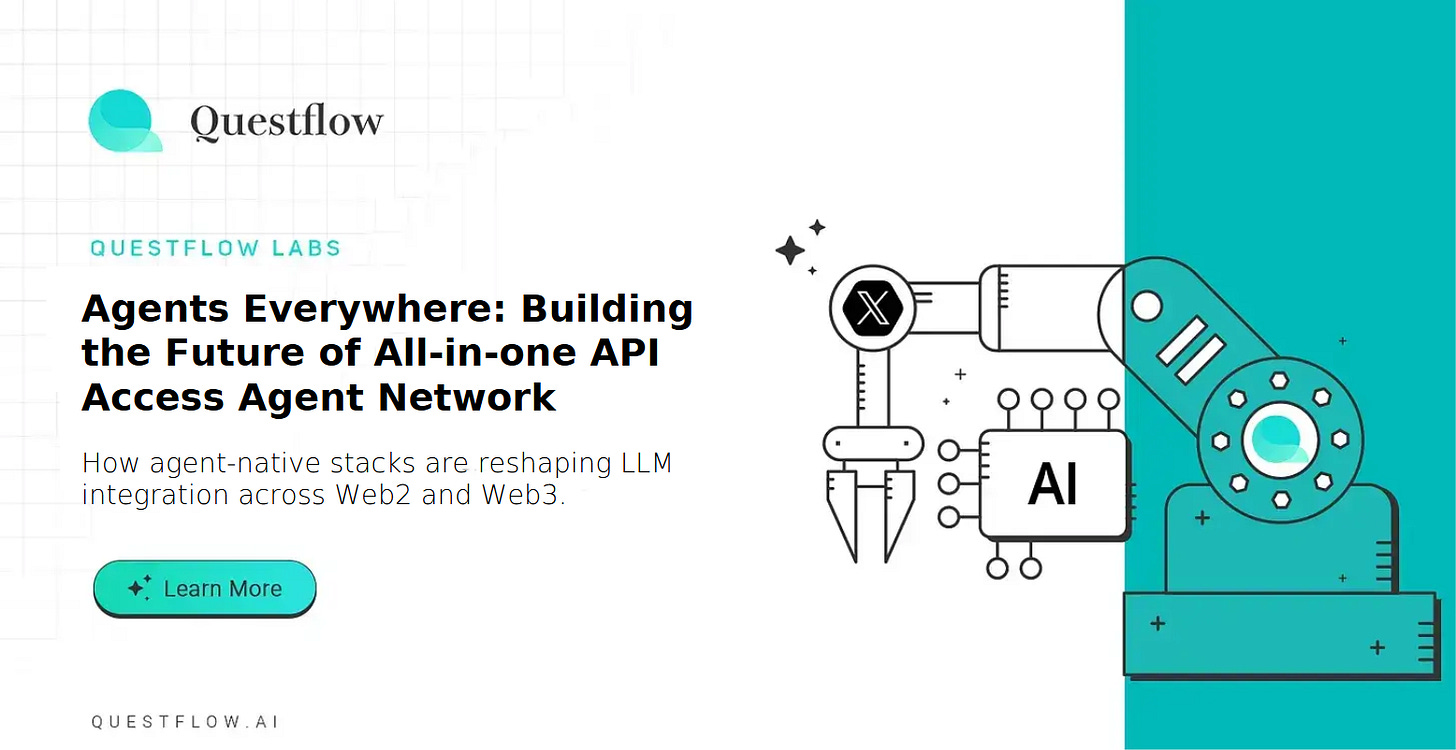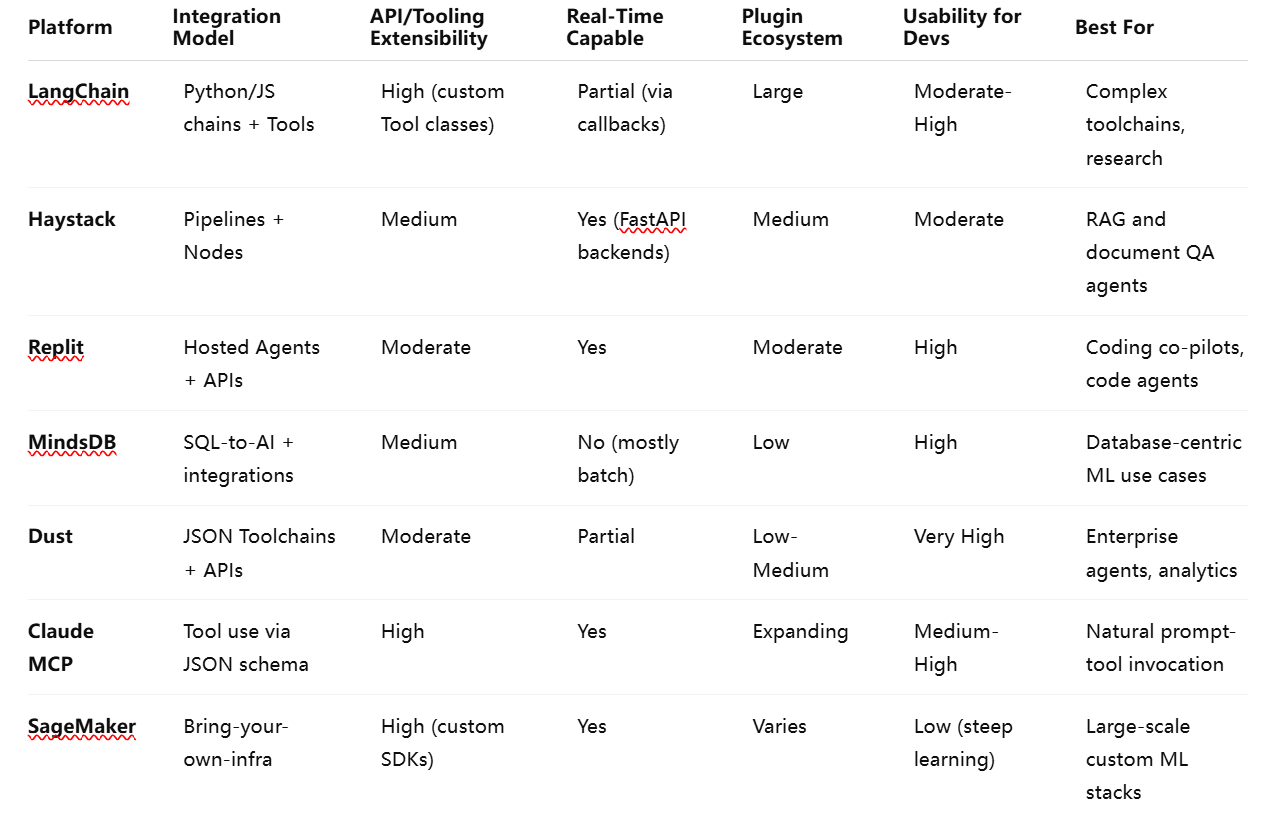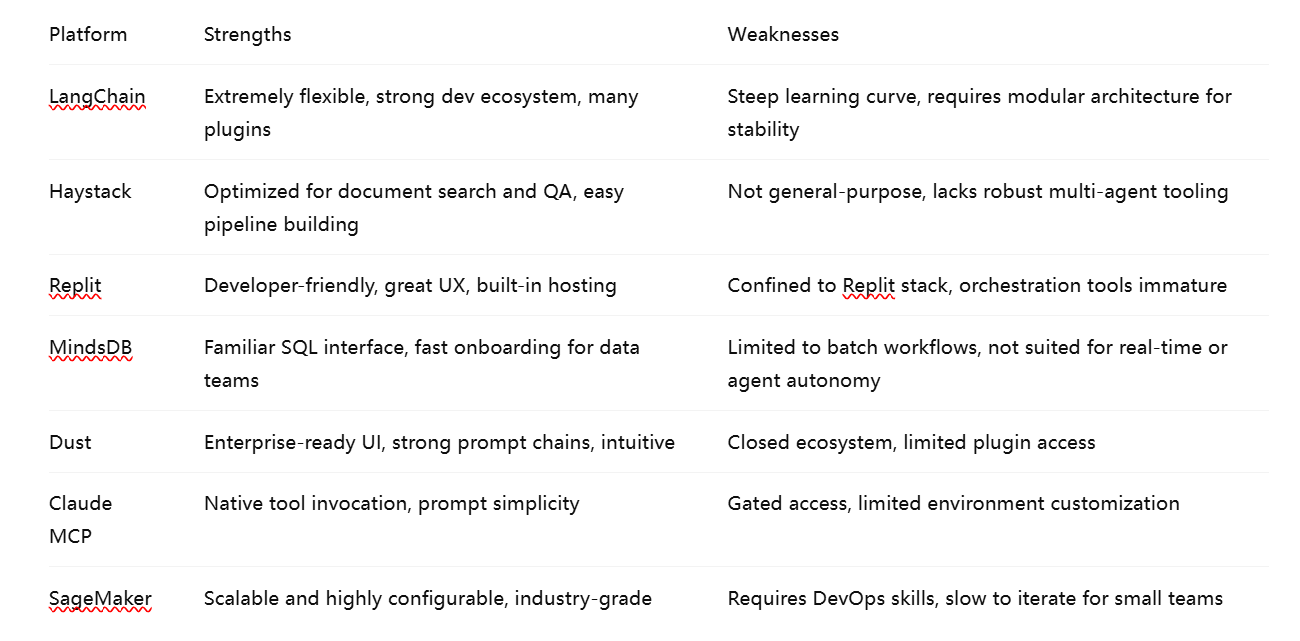Agents Everywhere: Building the Future of All-in-one API Access Agent Network
How agent-native stacks are reshaping LLM integration across Web2 and Web3.
Introduction
As the AI tooling landscape evolves at a blistering pace, a new generation of platforms is competing to make large language models (LLMs) not just smart, but useful. That means making them able to reason, access real-time data, interface with software, and—crucially—integrate with the rest of the modern internet.
This post takes a deep dive into the emerging agent platforms that power this interface layer: LangChain, Haystack, Replit, MindsDB, Dust, Claude MCP, and enterprise systems like Amazon SageMaker. We explore how these tools differ in their approach to integrating external APIs, handling real-time workflows, and orchestrating multi-step tasks.
We also examine the limitations they face and conclude with a look into the future—where platforms like Questflow are extending this paradigm to Web3, enabling a new frontier of composable, onchain-aware AI agents.
Comparative Matrix of AI Agent Platforms
Below is a comparative chart for a quick overview:
Platform Strengths & Weaknesses
Architecture Patterns Across Platforms
What’s Still Missing in the AI Agent Ecosystem?
Despite significant progress, these platforms still lack:
Robust Multi-Agent Coordination: Most systems can't dynamically spawn or delegate between agents.
Shared Context/Memory: Agents operate in isolation without collaborative memory systems.
Secure Execution Layers: Plugins lack sandboxing or credential abstraction.
Cross-Platform Agent Composability: Difficult to link agents across tools or clouds.
These gaps create high barriers for real-time, multi-service, production-grade applications.
Questflow – Building the Agent Layer for Web3 and Beyond
Enter Questflow Developer Platform (QDP) — designed not only to solve these problems but expand what’s possible.
QDP: Agent Infrastructure Reimagined
MCP Compatibility: Supports Claude-style MCP + OpenAPI schemas
MAOP Protocol: Native agent-to-agent orchestration
Self-Custodial Wallet Support: Every agent can own and act on-chain
Web3 API Ingestion: StakeKit, Coingecko, Okx, CDP, Dexscreener, Virtuals, etc.
Compared to Web2 Agent Platforms:
Real-World Use Cases of QDP
1. Social Media Intelligence Agent Swarm (Live Case)
Post, reply, quote, monitor Twitter via natural language
Autonomous engagement & analytics
API: Twitter + Coingecko + custom endpoints
2. DeFi Investment Strategy Builder
StakeKit + Yield API agents suggest optimal portfolio
Monitor, reallocate funds automatically
3. Composable Developer Workflows
Drag & drop multiple API agents (Web2 + Web3)
Deploy swarms with built-in wallets
What’s Next for Questflow
As the first agent-native orchestration and wallet platform, Questflow’s roadmap includes:
Expanding Web3 data sources (Zapper, Dune, The Graph, etc)
Adding vector-based shared memory for agent swarms
Launching a public agent app store
Support for OpenLLM, Claude, Gemini, and fine-tuned models
By bridging Web2 MCP APIs and Web3 protocols, Questflow is laying the foundation for the next generation of software: AI that’s autonomous, composable, and intelligent across ecosystems.
"One day, anyone should be able to describe a problem—and Questflow’s agents will design, execute, and maintain the solution."
Conclusion: Agents as Infrastructure
Today’s agent stacks are built for Web2. Questflow is rethinking the stack from first principles—bringing composability, sovereignty, and cross-protocol intelligence into one platform.
We’re not building an assistant. We’re building the OS for autonomous AI Agents.






